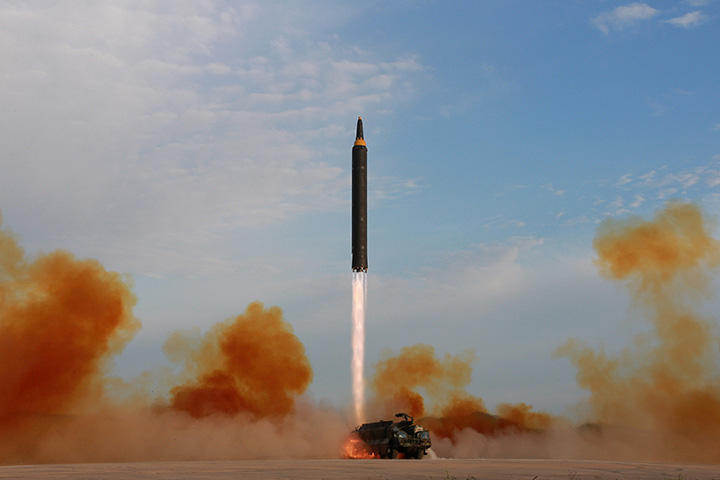North Korea accidentally hit one of its own cities with a missile last spring, according to a news report.

The Diplomat reported Wednesday that an intermediate-range missile test on Apr. 28, 2017 failed shortly after launch and the missile crashed in the North Korean city of Tokchon.
At the time, U.S. officials said that the missile had broken up within minutes of taking off. A Pentagon spokesperson would not confirm the details outlined in the Diplomat article, saying that the Department of Defense does not discuss intelligence.
As this was a test, it would not have been carrying an active payload, though the missile itself could still have exploded depending on how exactly it failed, according to the article.
The crashing missile appeared to have hit a small agricultural or industrial complex and damaged some buildings, according to the report’s co-author David Schmerler, a research associate at the James Martin Center for Nonproliferation Studies.
“I can tell you that there were things that were there. I can tell you those things were removed. I know that there is a seasonal greenhouse that was damaged and there was a structure with fencing that was damaged,” he said.
Schmerler used satellite imagery to examine the alleged crash site. On Apr. 26, there was a greenhouse and what appeared to be a couple of small structures in a courtyard.
A day after the Apr. 28 missile launch, those small buildings were gone, one side of the greenhouse appeared damaged, and there appeared to be some kind of “charring” in the courtyard area.
Schmerler said that it’s impossible to know whether there were any casualties as a result of the crash. “Right over the hill, there’s a bunch of housing,” he said. “Had it fallen 250 metres to the east, it would have fallen on a residential area. That would be bad news for anyone who lives there.”
Google Earth satellite image from Oct. 23, 2016

Google Earth satellite image from May 18, 2017, 21 days after the missile test

The report authors obtained the location of the crash site through a tip from a U.S. government source, according to the article, and then verified it through examining satellite images.
Schmerler said that this missile failure reveals the limits of North Korea’s missile testing program. “Many other countries, including the United States, when testing missile systems will go through failures,” he said. But due to financial constraints and the small size of North Korea, they maybe aren’t able to test as often or as safely as the United States would.
“It does highlight the fact that North Korea isn’t a large country. And when they do test over their own country, if the missile fails there is a risk that they’re going to hit populated areas.”
This particular missile has since had several successful test launches, he noted.
But, the article states that a missile failure at the wrong time could have significant implications for international security – particularly given North Korea’s recent practice of testing ICBMs over Japan.
“Should a future North Korean missile overflying fail at the wrong moment during its powered flight phases, its trajectory may come to resemble an attack on Japan,” it reads.
“North Korea’s missile tests, which violate its obligations under United Nations Security Council resolutions, come with no formal warning or notices to airmen, leaving regional states and the United States to their own devices in interpreting Pyongyang’s intentions once the engines are ignited.”
Schmerler said that because the missiles fly so high when testing over Japan, it’s unclear how much debris would actually survive re-entry, so it’s hard to say whether a failure would cause any damage.







Comments